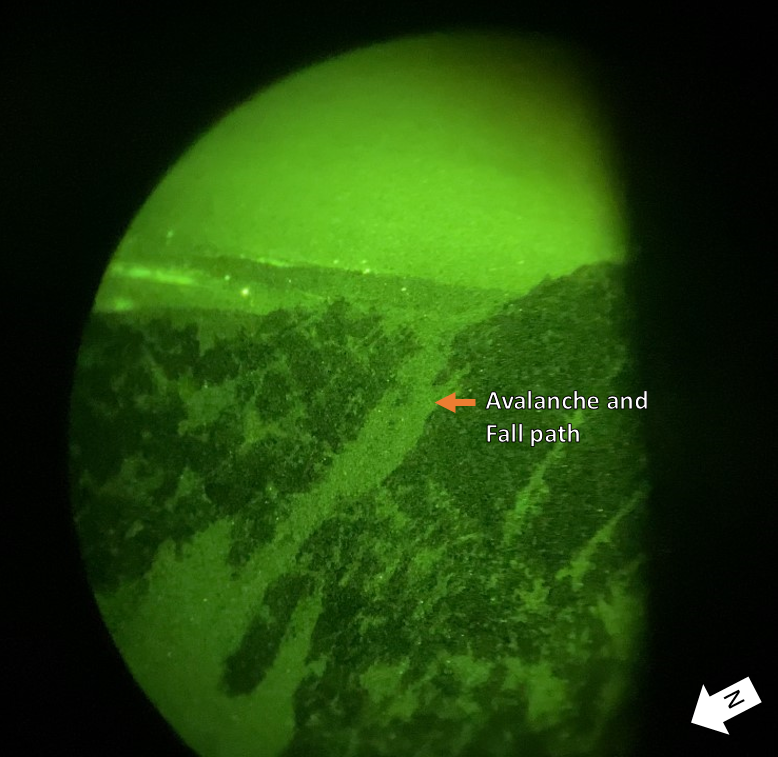A photo taken through night vision device shows the presumed fall path of a hiker from near the top of Mt. Ellinor, Wash., on December 16, 2023.
NAVAL AIR STATION WHIDBEY ISLAND, Wash. – A Search and Rescue (SAR) team from Naval Air Station (NAS) Whidbey Island rescued a hiker who had fallen more than 1,200 feet down a ravine on Mt. Ellinor in the Olympic National Forest Saturday, December 16, 2023.
The 30-year-old male hiker had fallen down the ravine near the top of the mountain and his hiking partner was unable to find or contact him. Shortly after 6:20 p.m., the SAR crew launched from NAS Whidbey Island Ault Field and they made contact with the Mason County Search and Rescue Incident Commander once on scene.
After finding no trace of the hiker near the top of the mountain, the SAR crew began a search at the bottom of a large avalanche runout some 1,000 feet down slope from the top of the mountain. During that search they saw a flashing light near a boulder field slightly below the avalanche runout, and more than 1,200 feet below where he initially fell.
The SAR crew lowered a crew member to the hiker’s location and, concerned with the risk of further avalanches or rock falls, quickly hoisted the patient back aboard the helicopter.
The patient was transported to Harborview Medical Center, Seattle, Wash. by 7:45 p.m. with a broken arm, symptoms of hypothermia and significant abrasions.
Naval Air Station Whidbey Island SAR has conducted 43 missions this calendar year, which includes 4 MEDEVACs, 6 searches and 33 rescues.
The Navy SAR unit operates three MH-60S helicopters from NAS Whidbey Island as search and rescue/medical evacuation (SAR/MEDEVAC) platforms for the EA-18G aircraft as well as other squadrons and personnel assigned to the installation. Pursuant to the National SAR Plan of the United States, the unit may also be used for civil SAR/MEDEVAC needs to the fullest extent practicable on a non-interference basis with primary military duties according to applicable national directives, plans, guidelines and agreements; specifically, the unit may launch in response to tasking by the Air Force Rescue Coordination Center (based on a Washington State Memorandum of Understanding) for inland missions, and/or tasking by the United States Coast Guard for all other aeronautical and maritime regions, when other assets are unavailable.







